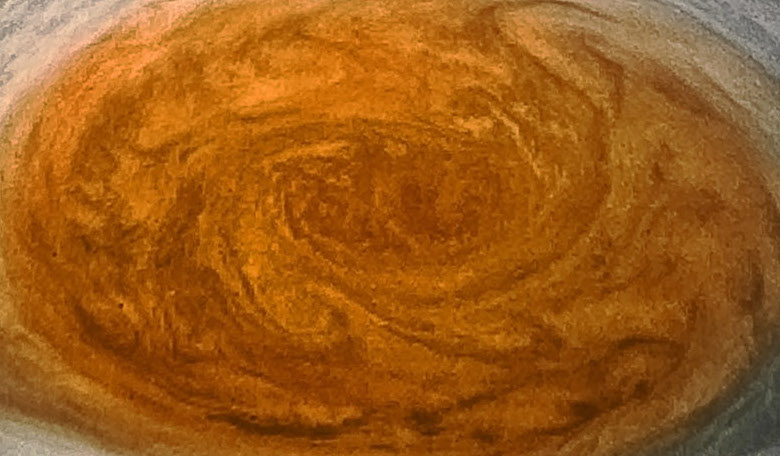Highly-anticipated images of Jupiter's Great Red Spot in all of its glory have been released by NASA, after Juno did a fly-by of this most distinguished feature earlier this week.
Like Saturn’s rings, Jupiter’s Red Spot has enthralled professional astronomers and amateur enthusiasts alike since the planet was first discovered. Now, this swirling maelstrom is unravelling its secrets as Juno swooped in to about 9,000 kilometres (5,600 miles) above the planet's cloud tops to get a really good look at what is happening in Jupiters turbulent atmosphere.
"For hundreds of years scientists have been observing, wondering and theorising about Jupiter's Great Red Spot," said Scott Bolton, Juno principal investigator from the Southwest Research Institute in San Antonio. "Now we have the best pictures ever of this iconic storm. It will take us some time to analyse all the data from not only JunoCam, but Juno's eight science instruments, to shed some new light on the past, present and future of the Great Red Spot."
And the images don’t disappoint. The Red Spot reveals a tangle of dark, veinous clouds meandering their way through a massive crimson oval. Just how massive is the spot? Massive enough to swallow the Earth with a little room left over for good measure. It has also been churning away for at least 350 years, if not longer, although research has indicated that the massive spot could be shrinking.
It is thought that its red hue is the result of noxious gases – ammonia and acetylene – that are broken down when they are exposed to sunlight. It has also been suggested that if you were to peer just a little further down, then the Great Red Spot would actually appear rather bland. Perhaps Juno will be able to give further insights into the workings of the spot in future flybys (the next one is scheduled for 1 September), however it is unlikely that a Great Bland Spot would bewitch quite so many people.
Or then again; ”I have been following the Juno mission since it launched," said Jason Major, a JunoCam citizen scientist and a graphic designer from Warwick, Rhode Island who produced the above enhanced-colour image of The Great Red Spot. "It is always exciting to see these new raw images of Jupiter as they arrive. But it is even more thrilling to take the raw images and turn them into something that people can appreciate. That is what I live for."











